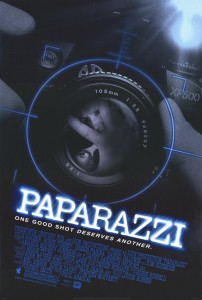 Last week, Alec Baldwin had a fight with a New York Daily News photographer who tried to take pictures of him and his fiancé leaving the NYC marriage license office (their nuptials are scheduled for June 30). According to Baldwin, the photographer, Marcus Santos, was aggressively shooting them. According to Santos, Baldwin flew into a rage, menaced a second News photographer, and then punched Santos in the chin. Although Baldwin denies throwing any punches, an NYPD investigation is ongoing.
Last week, Alec Baldwin had a fight with a New York Daily News photographer who tried to take pictures of him and his fiancé leaving the NYC marriage license office (their nuptials are scheduled for June 30). According to Baldwin, the photographer, Marcus Santos, was aggressively shooting them. According to Santos, Baldwin flew into a rage, menaced a second News photographer, and then punched Santos in the chin. Although Baldwin denies throwing any punches, an NYPD investigation is ongoing.
Things continued to heat up for Baldwin on Wednesday, when he purportedly rode his bike over the foot of an “Inside Edition” reporter waiting outside his home to inquire about the prior incident. Baldwin’s response on Twitter? “I think it was that person who placed their foot under the wheel of my bike.”
The boldness and hilarity of Baldwin’s responses to these “journalistic” intrusions aside, paparazzi run-ins like these have prompted one of my smartest friends (A.K.A “The Dishmaster“) to ask one of her many great questions: “Why don’t we have effective and constitutionally-sound laws that protect celebrities from overly aggressive, privacy-invading paparazzi?”
Although the Constitution affords privacy rights which may be protected by laws prohibiting trespass, stalking, intrusion, and certain audio/video surveillance, the First Amendment also – at least arguably – protects certain rights to snap photos of celebs in public and publish them.
Not surprisingly, of the states in the US, California was the one to spearhead the creation of an anti-paparazzi law – California Civil Code Section 1708.8. The law was passed in 1998 in response to Princess Diana’s death. It created a civil damages cause of action for three tactics commonly used by paparazzi to get celebrity photos and footage. That statute has three components: (1) a “physical invasion of privacy law” creating damages for entering another person’s property to record an image, video or sound; (2) a “technological trespass” law, which makes photographers liable if they use an enhancing device to record from afar, such as a telephoto lens or parabolic microphones; and (3) the statute makes actionable any assault “committed with the intent to capture” images, video or sound. Although some have questioned the Constitutionality of the law on First Amendment grounds, no one has yet mounted a successful challenge.
The law was strengthened in January, 2010, when California made it a crime to snap and sell unauthorized photos of celebrities in “personal or familial activity” (violators face fines up to $50,000). Furthermore, media outlets using material obtained from these invasive tactics became liable for special damages, punitive damages, and a civil fine anywhere from $5,000 to $50,000.
And to address paparazzi car-chase scenarios, California also passed an additional law in late 2010, which doles out harsher penalties for paparazzi found in violation of traffic laws or interfering with the operation of a celebrity’s vehicle while in the midst of a photo pursuit (violators may receive a fine of up to $5,000 or a year in prison).
One group claiming credit for the strengthening of the anti-paparazzi law in 2010 is The PAPARAZZI Reform Initiative, which was founded in February 2009. The Initiative strives to highlight egregious paparazzi incidents, track anti-paparazzi laws, and advocate for reform.
Although federal legislation has been proposed, it’s proved fruitless. In 1998, for example, four bills were given to Congress pertaining to federal anti-paparazzi legislation, but they went nowhere. And unfortunately for Alec Baldwin, New York has yet to follow California’s lead, and Baldwin is therefore left with no specific protections, but based on these recent run-ins he certainly seems capable of fending for himself. In the alternative, maybe he should give Bloomberg a call…
